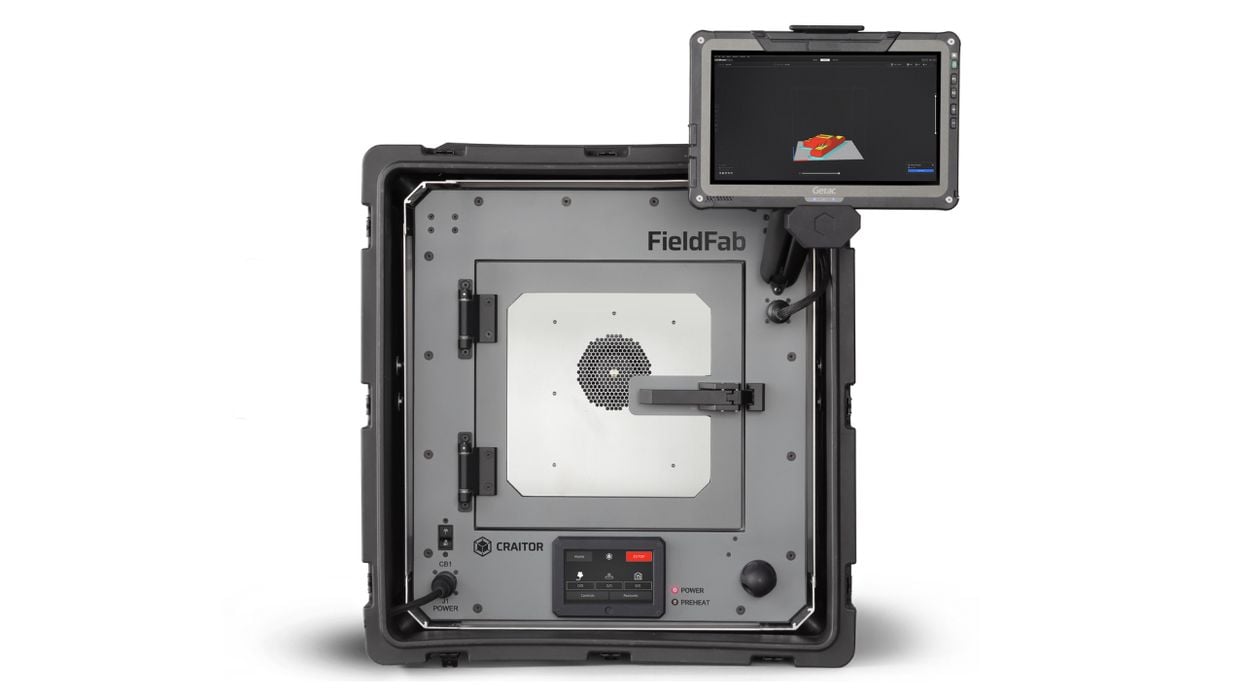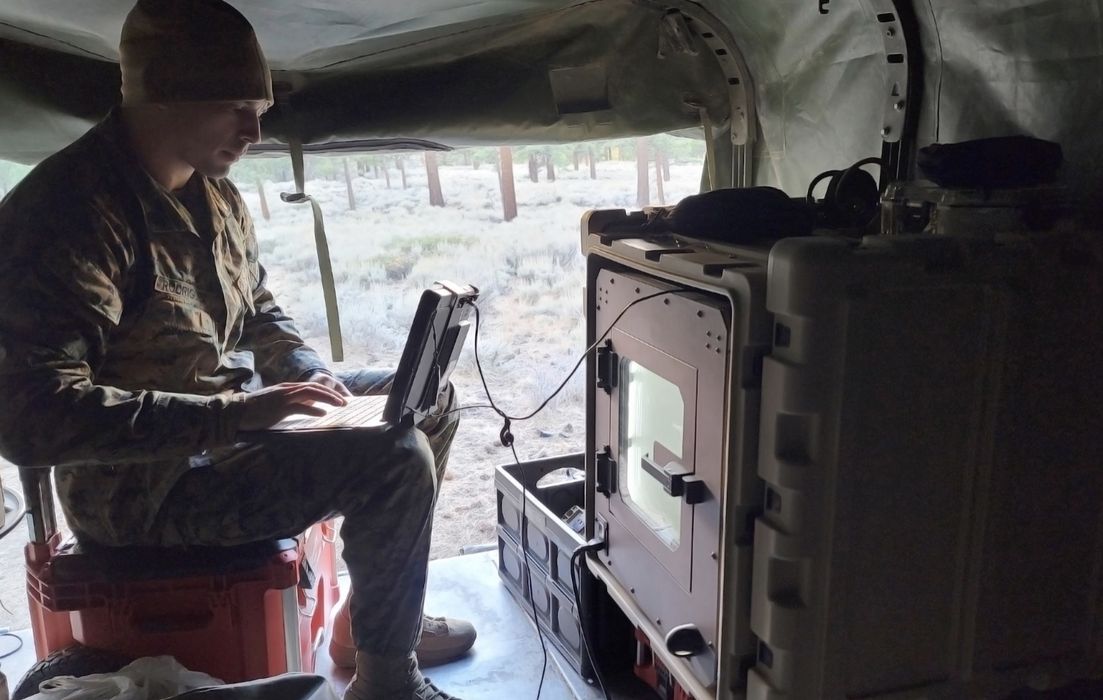
Today I’m looking at a 3D printer I haven’t seen previously, the FieldFab by Craitor.
The unusual name “FieldFab” hints at the goal of the device. It’s designed to be used outdoors, “in the field”. Craitor explains:
”FieldFab pushes the traditional notion of what a 3D printer can do, printing advanced materials continuously in the field.
Other commercial 3D printers lack ruggedization and hardening needed for expeditionary operation. Be it -40°C, 50°C, or on the move during tactical transport, our system enables you to manufacture anywhere.”

This is not a new system; it apparently has been used by the US Marine Corps and US Army for “over three years” in no less than 25 different field deployments.
The system seems to be quite capable, aside from its exterior environmental capabilities. Its nozzle can reach 500C, enabling the printing of almost any polymer material, including high temperature PEEK or ULTEM. The build chamber can be heated to 80C, which explains why the device can still operate in -40C outdoor temperatures.
The FieldFab can also be used in +50C environments, the opposite scenario. This is also not a problem because the build chamber is designed to operate at temperatures even higher than that. It is also said to operate at high elevations where the air pressure is low.
It does require an external power supply, however; it’s not completely portable. The FieldFab absorbs 1.2kW, peaking at 10A.

Speaking of portability, the FieldFab weighs 86kg (190lb), so it’s not exactly something that you’d carry around. You’ll need a vehicle like that above to move the FieldFab.
The print volume is generous, but not large format at 280 x 280 x 280 mm. This should enable the production of many smaller parts for use in field operations.
The FieldFab is obviously not for everyone. It’s designed for those operating in unpredictable outdoor temporary locations that require arbitrary parts on demand. To me that means military applications, which seems to be the source of most of the product images by Craitor.
I don’t know the price point for the FieldFab, but it is likely high relative to other commercial 3D printers: military hardware always tends to be a bit pricey. However, equipment designed for a specific job may be what’s required, and for that you pay the price.
Via Craitor
